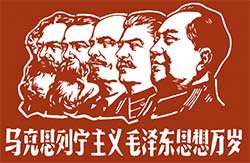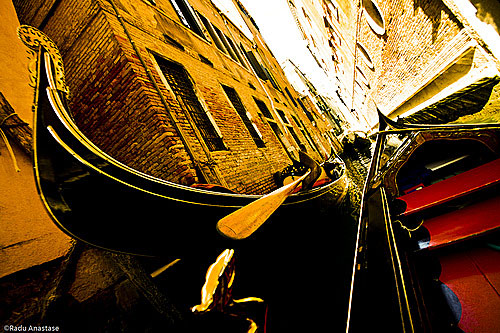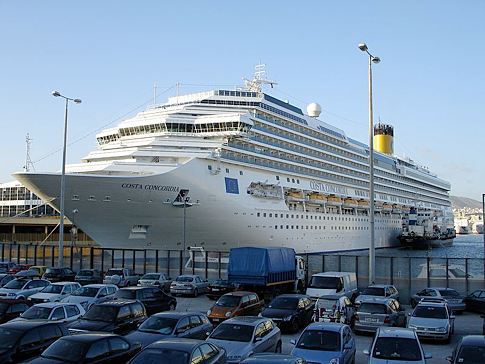If you’ve ever chatted about politics in Italy, you will probably have come across number of Italians claim to be ‘communists’. Indeed, those of you who have spent a few years in Italy will have discovered that politically, Italians tend to be rather polarised. Aside from those Italians with moderate left and right wing leanings, there are those who are quite happy to be call themselves fascists or communists.
There was once communist party in Italy, the biggest in the West too, but it fizzled to an end in early 1991, but not before scaring the living daylights out of the anti-communist USA and UK.
During the cold war, there were real fears that Italy the dreaded communists could take over and that Italy would then join forces with the USSR. To prevent this from ever happening, behind the scenes covert activities took place and contingency measures, such as Operation Gladio, were made. The aim of Cold War covert ops was to prevent Italy turning red. Well, the USA and the UK were, to put it mildly, a bit late. Italy’s communist phase began and ended long time ago! A resurgence though, did seem possible and, as I hope will become clear, the causes of the post World War 2 rebirth of communism are not a million miles away from the origins of communism in Italy many hundreds of years before.
Communism Began in 10th Century Italy
While most of us tend to think of communism as being a relatively modern ideology, largely developed by a certain Karl Marx, it may come as a surprise to learn that the origins communism, albeit the Italian concept, can be traced back to the 10th century, long, long before Marx came on the scene.
While the rest of Europe was largely dominated by monarchs, Italy had quite a number of republics. What prevented the emergence of a single monarchy in Italy was the nation’s geography. Mountains made communications difficult and made conquests a complex affair too. The very same geography helped give birth to communism in Italy.
Italian-style communism was not a national phenomena. Instead there were pockets of communism throughout what was eventually to become modern-day Italy with the majority of the communist hotspots being in Italy’s centre and north.
One of Italy’s earliest communist cites was Forlì which lies in what is now the Italian region of Emilia-Romagna, a region which is to this day known for its left-wing leanings. Indeed, one of Italy reddest cities, Bologna is to be found in the very same Italian region as Forlì.
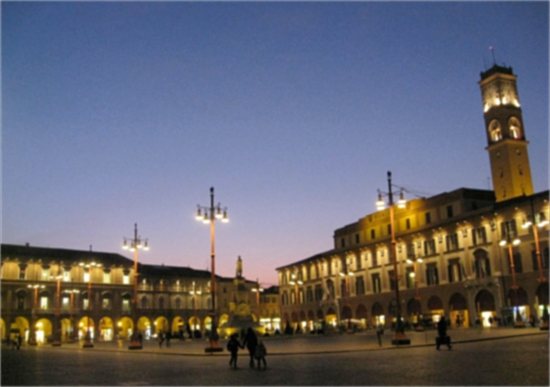
Other communist towns and cities Italy were Milan, Piacenza, Cremona, Mantua, Crema, Bergamo, Brescia, Bologna, Padua, Treviso, Vicenza, Venice, Verona, Lodi, Reggio Emilia and Parma. Genoa, Turin, and Ragusa were also ‘comunes’. In Italy’s centre, Italian-style communist cities and towns included Florence, Pisa, Lucca, Siena and Ancona. South of Rome there were the city-states of Salerno, Amalfi, Bari, Naples and Trani. The list, as you have seen, is quite long.
Even today, Italy calls local councils ‘communes‘. The origins of the word ‘commune’ give one a hint of the Italian shade of communism. This is from Wikipedia:
The English and French word “commune” appears in Latin records in various forms. The classical Latin communio means an association. In some cases the classical Latin commune was used to mean people with a common interest. Ultimately, the roots are cum (with or together) + munire (to wall), literally ‘to wall together’ (i.e., a shared fortification).
Back in the 10th, 11th and 12th centuries, the residents of various Italian cities, towns, and certain rural areas formed associations to protect themselves from lawless nobles and bandits. In public ceremonies, members of these communes swore to protect one another in times of trouble and to maintain peace within the town walls or within the rural area which formed part of the commune. Venturing beyond these walls was a risky business and travelling townsmen – only men really travelled in those days – were often attacked by either bandits or aggressive nobles. Revenge for attacks by nobles was exacted by means of killing the noble’s serfs, harassing members of the nobles families, burning crops or by destroying orchards.
United We Stand
It was a simple case of strength in unity; people combined forces in order to protect each other. Aside from the previously mentioned nobles and bandits, between which there was not much difference, power hungry bishops and abbots often wanted to take control of urban areas to incorporate them into their mini-empires. By creating communes, the ambitions of the bishops and abbots could be thwarted. Walls helped keep other potential conquerors at bay too.
Italy’s communes were self-governing corporations free of the influence of the aristocracy and the church. Admittedly, Italian communism was not too close to the contemporary concept of communism, in that Italian version was a more of shield from external influences behind which citizens could get on with their lives. Within Italy’s communist cities and towns, free enterprise was the norm.

Stop reading, start speaking
Stop translating in your head and start speaking Italian for real with the only audio course that prompt you to speak.
American scholar Rodney Stark* argues that most of Italy’s city states were republics and that they gave birth to modern capitalism. Arguably, the origins of capitalism could be seen as the evolution of this early form of communism. There is, actually, some evidence that this may be true in that communist China is becoming more capitalist with the passing of each day. Perhaps one could also argue that the former Soviet Union did not so much collapse, as evolve. That other, though much smaller bastion of communism, Cuba, appears to be evolving towards capitalism too. Italian communism, such as it was, evolved into capitalism long, long before China and Russia went down the same path.
From their communist beginnings, Italy’s city states, such as Genoa and Venice evolved into major economic powers. From 11th to the 13th centuries, Italy became one of the most urbanized areas – it was not a nation, as such – in Europe with some, for their time, huge cities. By the 13th century, the cities of Venice, Florence and Milan had over 100,000 inhabitants. Few other cities in the rest of Europe boasted such massive populations. Italian style communism proved attractive and literally attracted people to Italy’s prosperous city republics.
Revolutionary Bologna
Demonstrating just how ahead of its time it was, in 1256, the city of Bologna promulgated what was known as the “Paradise Law”, which abolished feudal serfdom and freed slaves. Now when did the French revolution occur? Between 1789 and 1799. And the Russian revolution? In 1917. Bologna preceeded both by several hundred years!
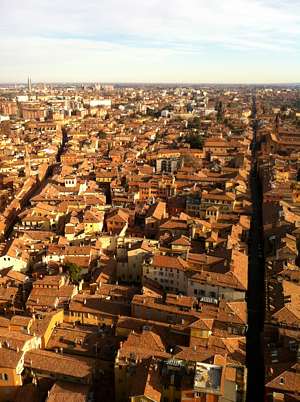
Humans being humans, even within Italy’s communist towns and cities, frictions existed. Evidence of such friction can be still be seen today in towns like San Gimignano, Tuscany, where factions built tall defensive towers to keep their rivals at bay.
Individual Freedom
Equality, a feature of modern communism, was not a fundamental aspect of Italian communism; however, the aim of Italy’s communes does appear to have been to create an environment in which individuals could flourish. The economic power of Venice and Genoa suggests that many certainly did.
The contemporary Italian interpretation of communism is not dissimilar to the historical version in that modern Italian communists are not always against free-enterprise, nor would they be too happy with Italy being transformed into an equivalent of bland Soviet Russia. Oh no. Italian communists like prosecco, fine food, and wealth. Few would comment that ‘property is theft’ though they may well support the observation that religion is the opiate of the people.
After the Second World War end, communism popped up its head once more. Were Italians fearful of a new class of lawless nobles and bandits emerging? Quite probably and indeed, they did. Think Andreotti, Craxi, Berlusconi and more or less the whole of Italy’s post-war political class. And the bandits? The mafia!
While some may well disagree, the most recent manifestation of communism, the Italian version, is the anti-establishment 5 Star Movement. In the same way as Italy’s communes of old fended off marauding nobles and ambitious bishops, the 5 Star Movement wants Italy to head off down the same path as those who swore allegiance to their fellows way back in the 10th century. The 5 Star Movement wants Italy’s citizens to determine their own destinies and would like to put an end to present-day lawless nobles such Silvio Berlusconi and the bandits are, as they were in post-war Italy, the criminal mafia.
Will capitalist Italy evolve once more? Only this time, will it return to the Italian style communist system which helped transformed certain Italian cities of old into minor world powers? Only this time, a united communist Italy could become a major world power.
History does have a tendency of repeating itself.
————————
*Stark, Rodney, The Victory of Reason, New York, Random House, 2005


